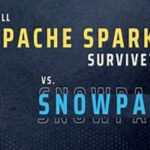Unexpected machine failures are one of the biggest cost drivers in manufacturing. A few hours of downtime on a CNC machine or an assembly line can derail production schedules, inflate operating costs, and damage customer relationships.
To stay ahead, manufacturers are increasingly turning to predictive maintenance—using data to foresee equipment issues before they occur.
But how do you implement such a system effectively? In this blog, let’s deep dive into two different approaches: one using Snowpark, and the other using Apache Spark. We’ll explore how each works, their pros and cons, and when to use which.
The Problem: Predict and Prevent Machine Failures
Imagine a manufacturing plant with a fleet of high-value machines—CNCs, injection molders, or stamping presses. These machines generate real-time sensor data: temperature, vibration, sound, oil pressure, and more.
The goal:
✓ Monitor this data continuously
✓ Detect patterns or anomalies
✓ Predict potential failures early
✓ Alert maintenance teams and reduce downtime
This is where data frameworks come into play.
Approach 1: Apache Spark for Real-Time Streaming and Machine Learning
Apache Spark is built for large-scale, distributed data processing—perfect when dealing with high-frequency, high-volume sensor data.
How Spark Works in This Context:
✓ Spark Streaming ingests sensor data from IoT gateways in real-time.
✓ MLlib is used to train anomaly detection models on historical data.
✓ Processed results (e.g., machine risk scores) are pushed to dashboards or downstream systems.
Pros of Using Spark:
✓ Handles high-speed data ingestion and streaming
✓ Open-source and flexible; runs on any infrastructure/>
✓ Vast ecosystem (SQL, MLlib, GraphX, Structured Streaming)
✓ Scales horizontally to process petabytes of data
Cons of Spark:
✓ Requires DevOps and cluster management
✓ Can be costly if not tuned properly
✓ Steep learning curve for teams without distributed systems experience
✓ May require moving data out of secure environments for processing
Approach 2: Snowpark for In-Warehouse Processing and Intelligence
Let’s say the factory is already using Snowflake to store production logs, quality checks, and maintenance records. Snowpark allows you to write transformation logic in Python, Java, or Scala within Snowflake itself—no need to move the data.
How Snowpark Helps:
✓ Engineers write models and data pipelines that run inside the Snowflake environment
✓ Risk scores from Spark can be brought in and correlated with production and maintenance history
✓ Business logic like “send alert if machine X is high-risk AND spares are unavailable” is implemented using Snowpark
Pros of Snowpark:
✓ No data movement—compute happens where the data lives
✓ Lower infrastructure overhead (no cluster to manage)
✓ Scales elastically with Snowflake’s compute engine
✓ Seamless integration with dashboards and business systems
✓ Great for structured logic, reporting, and decision support
Cons of Snowpark:
✓ Not built for real-time ingestion or high-velocity streaming
✓ Limited ecosystem compared to Spark (e.g., lacks deep ML libraries)
✓ Tied to the Snowflake platform
Summary: Comparing the Two Approaches
Criteria | Apache Spark | Snowpark |
| Best For | Real-time data streaming & ML on massive data | In-warehouse processing, reporting, and orchestration |
| Scalability | Scales across distributed clusters | Scales within Snowflake’s compute engine |
| Maintenance | Requires infrastructure & tuning | Fully managed within Snowflake |
| ML Capabilities | Strong (MLlib, integrations with ML frameworks) | Limited ML; better for logic & data joins |
| Cost Control | Can get expensive without tuning | Cost-efficient for Snowflake-native workflows |
| Setup Complexity | Medium to high | Low |
When to Use What
Use Spark when:
✓ You’re processing high-velocity IoT sensor streams
✓ Real-time scoring or machine learning is essential
✓ You need broad flexibility and integration options
Use Snowpark when:
✓ You’re already using Snowflake for data warehousing
✓ You want to build decision logic close to historical production data
✓ Cost-efficiency and ease of operations are priorities
Conclusion: A Hybrid Approach Often Wins
In real-world manufacturing environments, you don’t always need to choose one over the other.
Many successful factories use Apache Spark for live data ingestion and model inference, and Snowpark to enrich, filter, and act on that data inside Snowflake.
This hybrid strategy balances speed, scale, and intelligence, giving manufacturing teams a powerful edge in preventing failures and improving uptime—without overcomplicating their tech stack.




